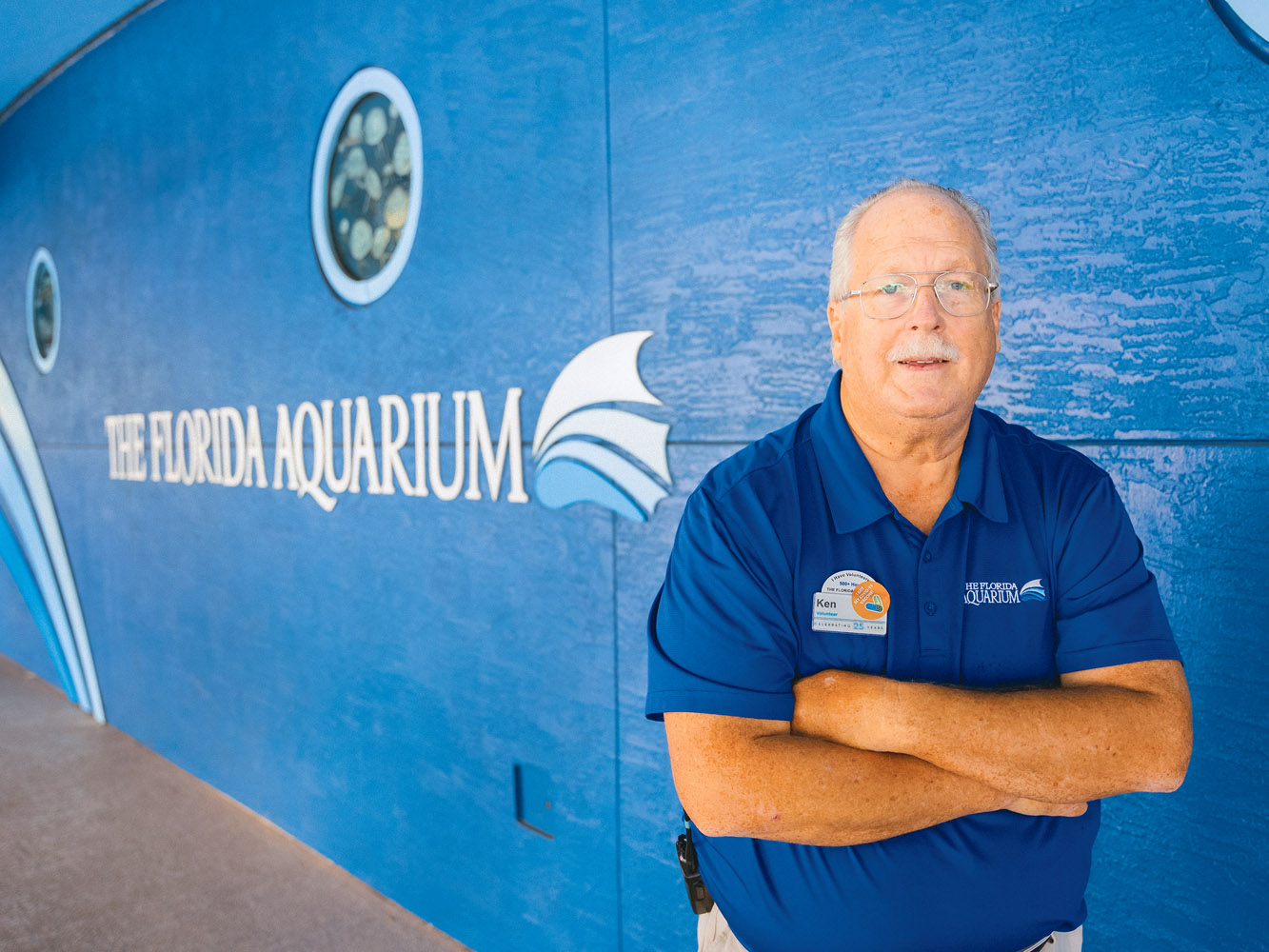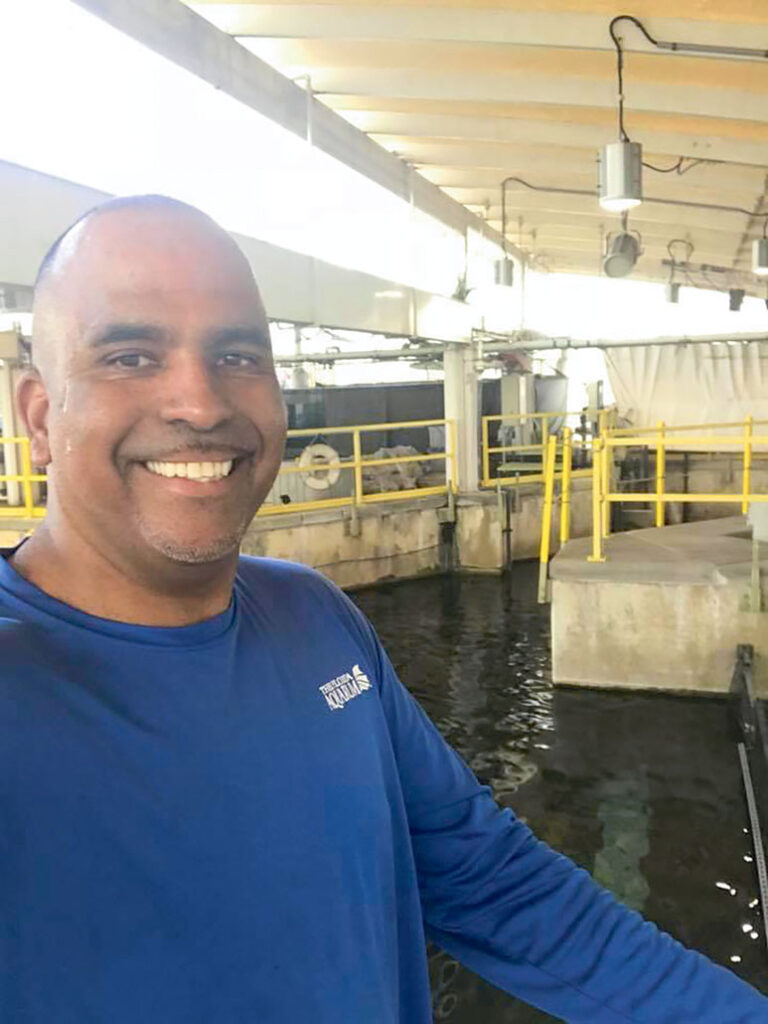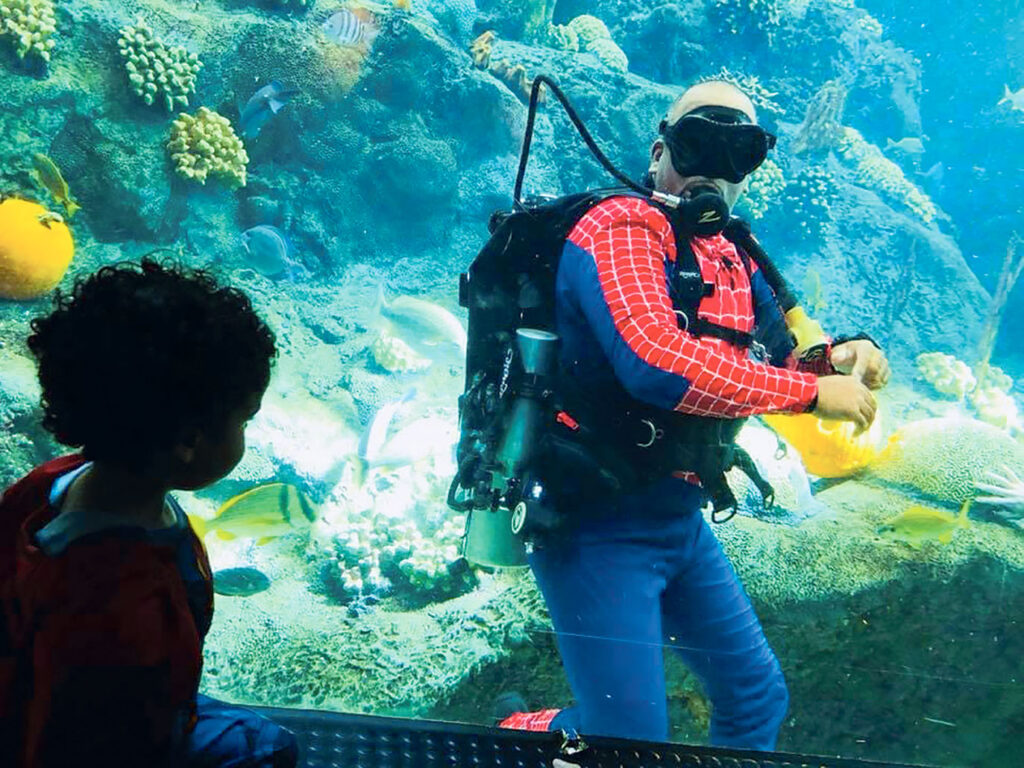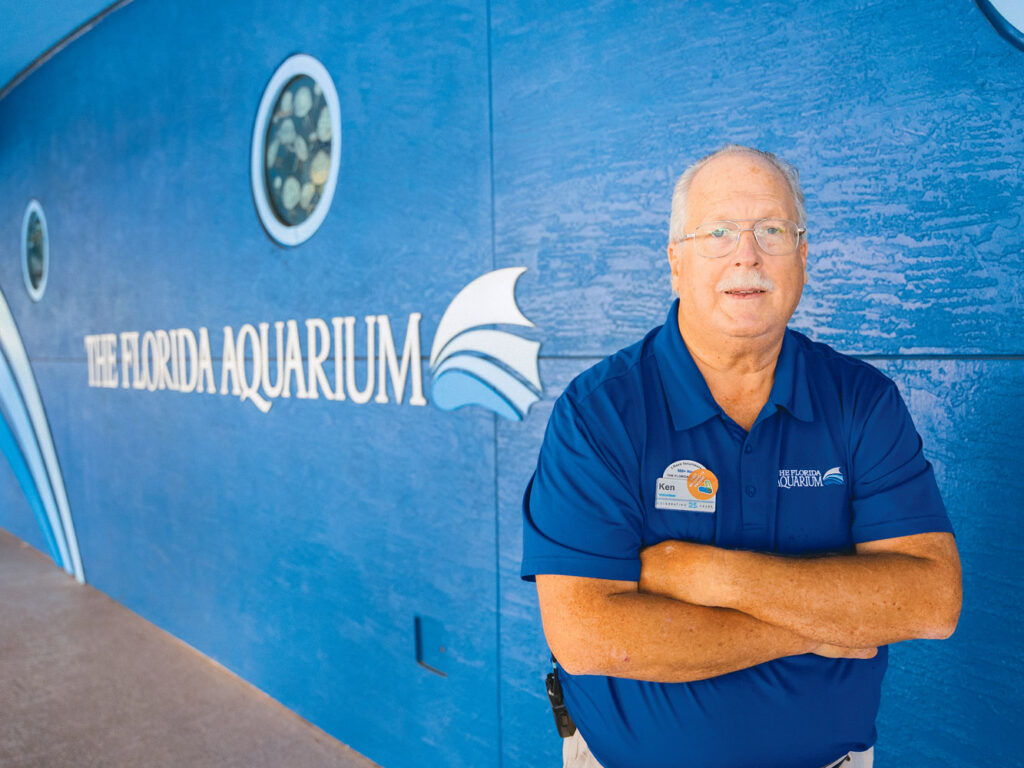
When Ken Moser moved to Wesley Chapel from Maryland in 2017, he and his wife Becky were retired and looking for a place to volunteer.
“We went to the (Tampa) zoo (at Lowry Park) in July and it was 95 degrees,” he says, adding that they immediately decided that the zoo was most definitely not the place for them.
Ken joined a fly fishing club, and says one of the members was always talking about the Florida Aquarium, so he eventually decided to give that a try.
In March 2019, Ken and Becky began training to volunteer together.
Over the last two years, and despite the Covid-19 pandemic, their efforts have made quite an impact.
So much so, that in April, Ken was named the Florida Aquarium’s Volunteer of the Year. This title earns him an honorary spot on the Aquarium’s Board of Directors for the year.
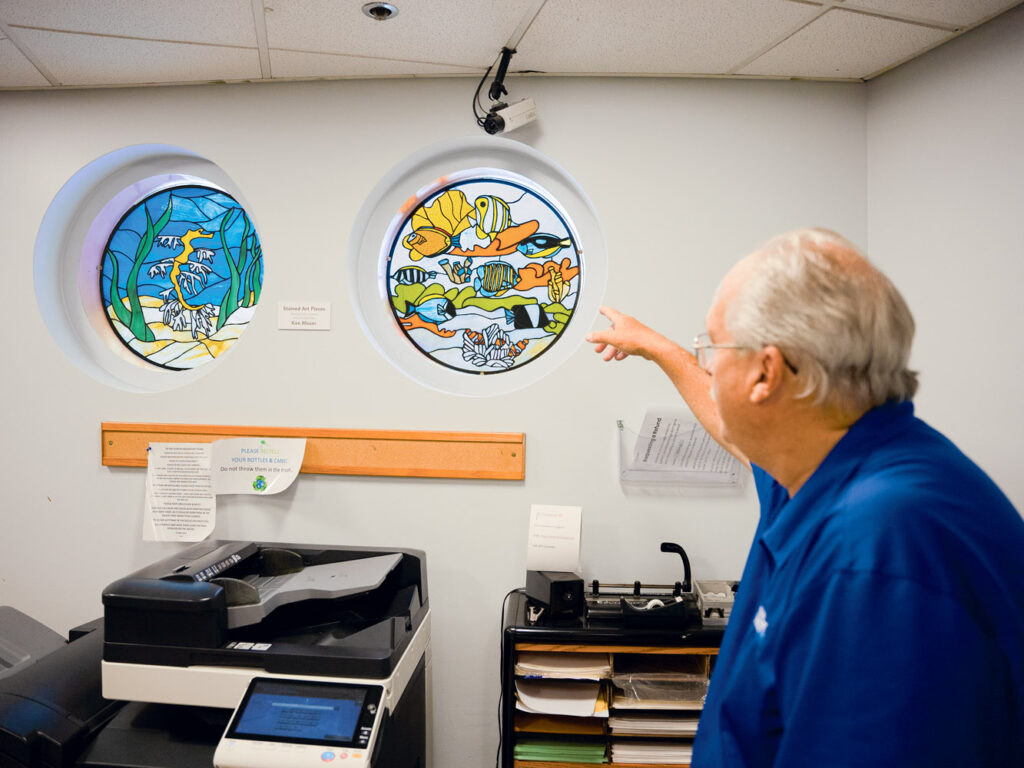
While he was chosen for his dedication — nearly 600 volunteer hours over the past two years (similar to Outstanding Service winner Edwin Rodriguez, whom we featured last issue) — and his infectious good attitude, he also was recognized for how another of his hobbies has enhanced the aquarium itself.
Ken created eight different stained glass windows that are now located throughout the aquarium. He says creating stained glass is one of many hobbies he’s taken up to keep busy during retirement.
“About eight years ago, my wife and I took a stained glass class at the community college,” Ken says. “I’ve been self-taught from there.”
The eight windows he’s created for the aquarium started when he noticed a two-foot window in the Madagascar section of the aquarium, where he thought he could mirror the bright colors of the exhibit with a brightly colored window.
After that, he says he was inspired to make a window of leafy sea dragons for the volunteer lunch room. Ken says they were so well-received that he was asked to make windows for the front of the aquarium and the CEO’s office.
“Each one is specific to the aquarium,” he says. “The pelicans are Josh and Theo, the penguins are waddling through the wetlands exhibit, there are sea turtles, spoonbills and moon jellies (jellyfish). I tried to keep it to what people can see at the aquarium.”
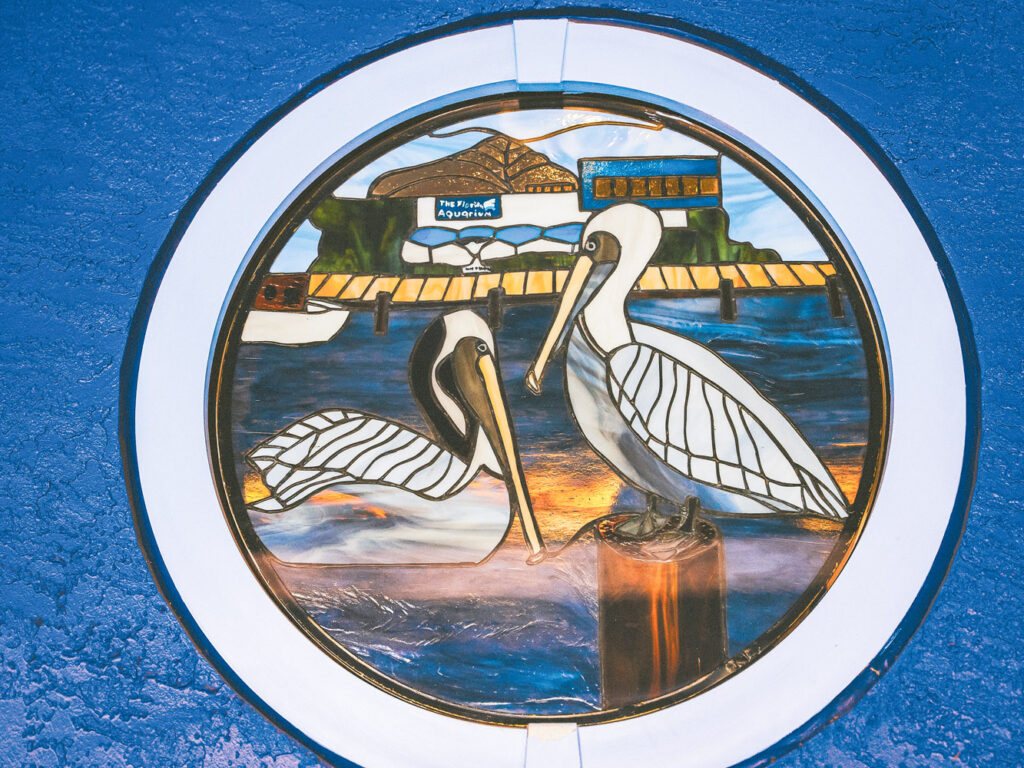
Josh and Theo are brown pelicans who have been popular on the Florida Aquarium’s social media accounts, and moon jellies are jellyfish that can not only be seen, but also touched in the aquarium’s touch tank.
Ken says the more time he spends there, the more he gets to know the animals.
“If you take the time to watch each individual animal,” he says, “you’ll start to see their individual behaviors.”
When asked if he has a favorite marine animal, Ken doesn’t seem to be able to narrow it down.
“Every week seems to be a different one,” he says. “The jawfish is one of the most comical characters, and I like listening to the wood ducks talking back and forth to each other in the wetlands. And, the stingray tank has a little baby who is worth the price of admission just to see her.”
Ken and Becky both work in education, teaching guests about the aquarium’s many animals. They initially agreed to volunteer at least eight hours a month, but soon determined they had more time than that to spare.
“Once I got in the commissary,” Ken says, “I would go three times a week. It’s just a fun place to go.”
The commissary is where food is prepared for the aquarium’s 8,000 animals.
“We have menus for the various animals,” Ken explains. “Some require different fishes that have to be cut up different ways, for example, and birds have seeds and pellets.”
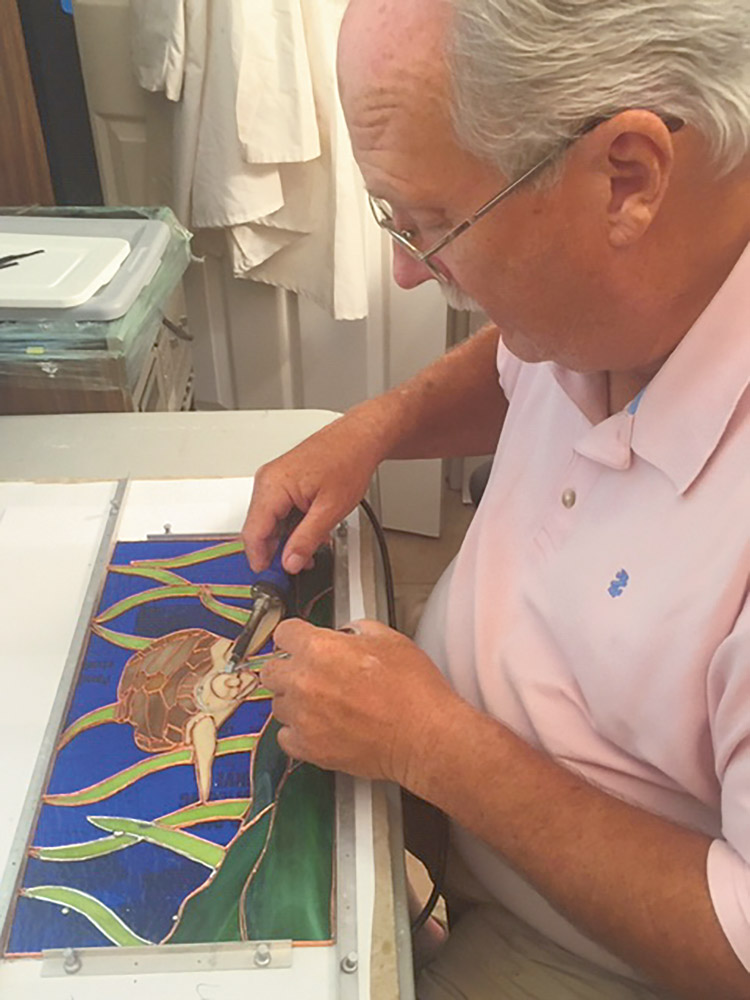
Ken hasn’t worked in the commissary since March 2020, before Covid-19 shut down the aquarium and no volunteers were allowed in.
When the aquarium reopened in May, a few volunteers helped in guest services and as “roaming disinfectors,” to make sure guests stayed on the pathways and wore masks.
Now, Ken says, a limited number of volunteers are back in the education department manning the touch tanks during the day.
“As soon as volunteers were allowed,” he says, “I felt responsibility to come back and keep the program alive. At one time, they had 300 volunteers, but they were down to zero. If no one comes back, there’s no program.”
He says the aquarium is always staffed to provide necessary care to the animals, but although the aquarium functions without volunteers, he says, “everyone is happier with us there.”
Ken adds that the staff treats the volunteers like family, and that he and other volunteers feel enormously appreciated and grateful to be able to be part of the aquarium.
He is impressed with how the aquarium has navigated its way through the pandemic, too.
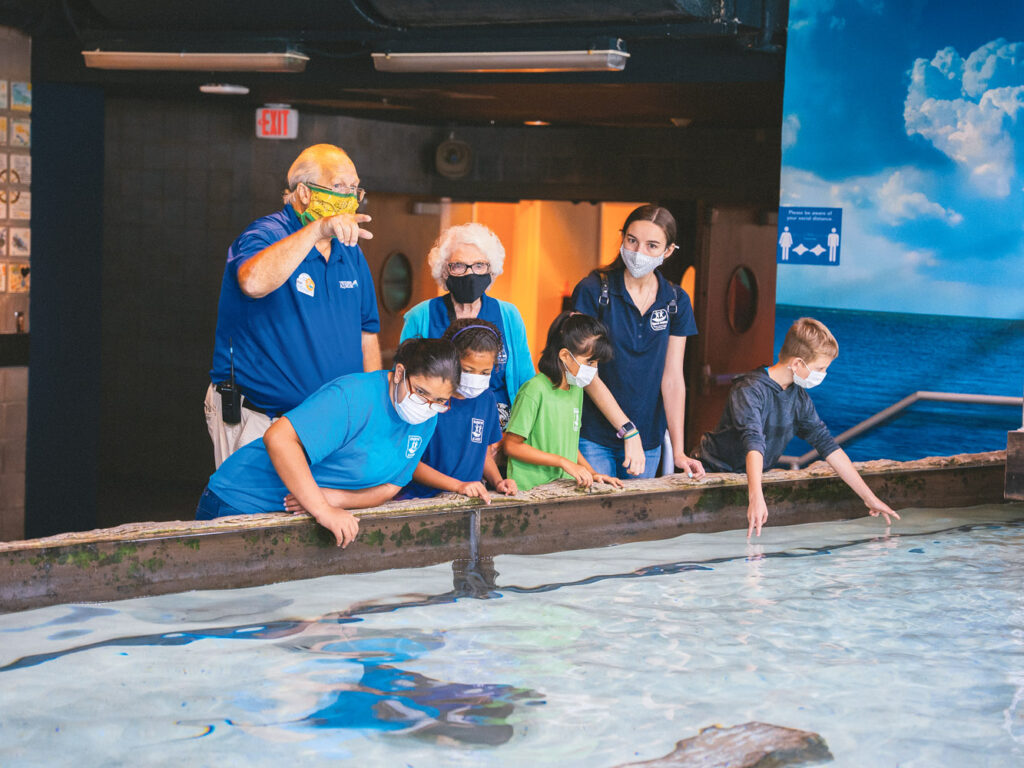
In fact, Ken and Becky donated their first Covid stimulus checks to the aquarium.
“Being retired, we didn’t plan on that money, so we thought, ‘Who needs it more?,’” says Ken. “The aquarium lost all of its guests and still needed to feed the animals every day, so we thought the money was better used that way.”
Ken says he and Becky intend to continue volunteering at the aquarium as long as they possibly can.
“When they announced the award, there were several people who had reached the 25-year mark as volunteers at the aquarium,” Ken says. “There are some really dedicated people there. I might not get 25 years — I started a little late — but at least I left my mark there with the windows. They should be there long after I’m gone, so I will leave that behind.”

